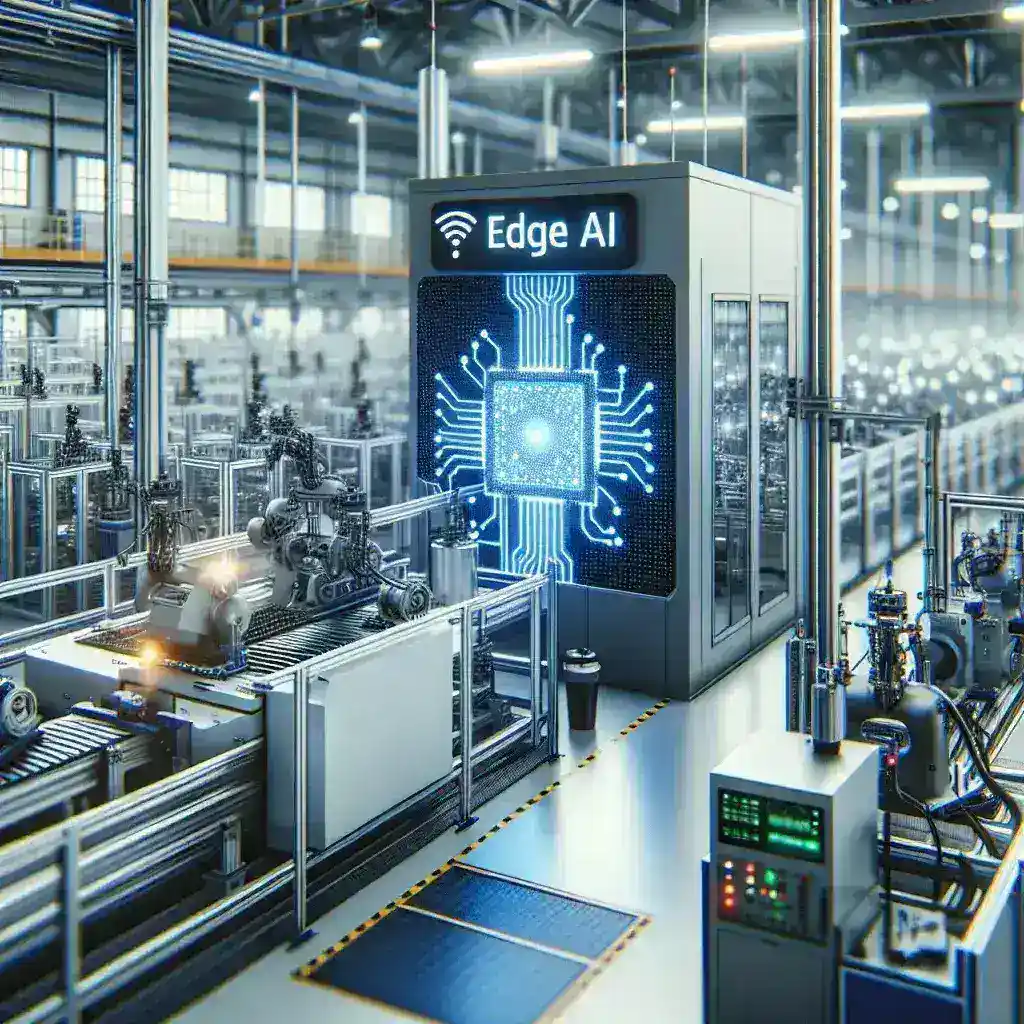NVIDIA, a leader in visual computing and artificial intelligence, has recently made headlines by unveiling its cutting-edge edge AI chips tailored for the smart manufacturing sector in U.S. factories. These innovative chips are expected to reshape the landscape of manufacturing, driving efficiency and productivity to unprecedented levels.
Understanding Edge AI Technology
Before diving into the specifics of NVIDIA’s new chips, it’s essential to understand what edge AI technology entails. Edge AI refers to the process of performing data processing and analysis at the location where the data is generated, rather than relying on centralized data centers. This results in faster decision-making, reduced latency, and enhanced privacy.
The Rise of Smart Manufacturing
Smart manufacturing represents a significant evolution in the production sector, integrating advanced technologies like IoT, AI, and big data analytics. The aim is to create a more responsive, efficient, and flexible manufacturing environment. As industries face increasing pressure to innovate and reduce costs, the adoption of smart manufacturing practices is becoming more prevalent.
NVIDIA’s Role in Smart Manufacturing
NVIDIA has positioned itself at the forefront of this revolution by developing powerful AI hardware and software solutions. The company’s latest edge AI chips are designed specifically for the unique challenges faced by manufacturers. By enabling real-time data processing, these chips empower factories to respond to operational changes immediately.
Key Features of NVIDIA’s Edge AI Chips
- High Performance: The chips deliver exceptional computational power, enabling complex algorithms to run efficiently on the factory floor.
- Robust Connectivity: Designed to integrate seamlessly with existing factory systems, these chips support various communication protocols, ensuring smooth data flow.
- Energy Efficiency: NVIDIA’s chips are engineered to consume less power while providing superior performance, making them ideal for sustainable manufacturing practices.
- Scalability: Manufacturers can start small and scale their AI capabilities as needed, adapting to changing demands in real-time.
Historical Context: The Evolution of Manufacturing Technology
The concept of smart manufacturing is not new; however, it has evolved dramatically over the years. From the introduction of assembly lines in the early 20th century to the incorporation of computers in the 1980s, each technological advancement has paved the way for increased efficiency and productivity. Today, the integration of AI and IoT constitutes the next significant leap forward.
Benefits of NVIDIA’s Edge AI Chips
The benefits of implementing NVIDIA’s edge AI chips in smart manufacturing environments are manifold:
- Improved Efficiency: By processing data at the edge, manufacturers can significantly reduce downtime and enhance operational efficiency.
- Enhanced Quality Control: Real-time monitoring powered by AI enables immediate detection of defects and anomalies, ensuring higher product quality.
- Data-Driven Decision Making: The chips facilitate enhanced data analytics, allowing manufacturers to leverage insights for better strategic decisions.
- Cost Reduction: Increased automation and efficiency can lead to substantial cost savings, making manufacturing processes more economically viable.
Challenges and Considerations
Despite the promising advantages, the implementation of edge AI technology in smart manufacturing does come with its own set of challenges:
- Integration Costs: Upgrading to smart manufacturing systems can require significant upfront investments for hardware and software.
- Skill Gaps: The shift towards AI-driven processes necessitates a workforce skilled in both manufacturing and digital technologies.
- Cybersecurity Risks: Increased connectivity may expose factories to cybersecurity threats, making robust security measures essential.
Looking to the Future: Predictions for Smart Manufacturing
As NVIDIA continues to innovate, the future of smart manufacturing looks promising. Experts predict a significant increase in the adoption of AI technologies across manufacturing sectors, with edge AI chips playing a central role. Moreover, advancements in machine learning and automation are set to further optimize production processes, leading to more sustainable and efficient factories.
Real-World Examples of NVIDIA’s Impact
Several manufacturers have already begun to integrate NVIDIA’s technology with remarkable success:
- Automotive Industry: Leading automotive manufacturers are using NVIDIA’s chips to enhance their robotic assembly lines, achieving higher precision in vehicle production.
- Consumer Electronics: Companies in the consumer electronics sector have leveraged AI for quality assurance, significantly reducing defect rates.
Conclusion
NVIDIA’s unveiling of edge AI chips signifies a monumental shift in the landscape of smart manufacturing in U.S. factories. By harnessing the power of AI and edge computing, manufacturers can expect to see enhanced efficiency, improved product quality, and significant cost savings. As the industry embraces these advancements, the potential for smarter, more agile manufacturing processes is bound to grow, ultimately shaping the future of production as we know it.

